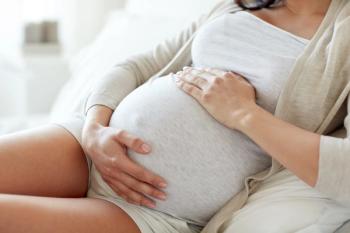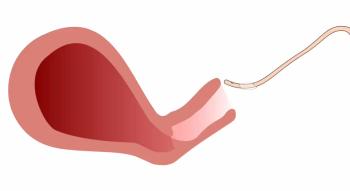
TAILORx trial finds chemotherapy not beneficial for all breast cancer patients
According to research recently published in The New England Journal of Medicine, chemotherapy is not more beneficial than treatment with hormone therapy alone for women with certain types of breast cancer. Plus: Do abortions cause depression? Also: Public comments are being solicited on a new systematic review from the US Preventive Services Task Force (USPSTF) on unhealthy alcohol use in adults aged 18 and older, including pregnant women.
According to research recently published in
The Trial Assigning Individualized Options for Treatment (TAILORx) was designed to address knowledge gaps by determining whether chemotherapy is beneficial for women with a mid-range recurrence score of 11 to 25 in the 21-gene recurrence-score assay. The recurrence score based on the assay ranges from 0 to 100 and is predictive of chemotherapy benefit when the score is high (26 or above). When the score is low (0-10), it is predictive of a low rate of recurrence (2%) at 10 years that is not likely to be affected by adjuvant chemotherapy. Secondary objectives of the trial included prospectively confirming that a low recurrence score of 0 to 10 is associated with a low rate of distant recurrence when patients are treated with endocrine therapy alone.
A total of 10273 women aged 18 to 75 who had HR-positive were enrolled in the study between April 2006 and October 2010. The participants were assigned to one of four treatment groups based on their assay score. Women with a recurrence score of 10 or lower were assigned to receive endocrine therapy only and women with a recurrence score of 26 or higher were assigned to receive chemotherapy plus endocrine (chemoendocrine) therapy. Women who scored between 11 and 25 were randomized to receive either endocrine therapy alone or chemoendocrine therapy. Among the 9719 eligible patients with follow-up information, 6711 (69%) had a recurrence score of 11 to 25, 1619 (17%) had a recurrence score of 10 or lower, and 1389 (14%) had a recurrence score of 26 or higher. For the mid-range cohort, the median duration of follow-up was 90 months for invasive disease-free survival (iDFS) and 96 months for overall survival.
For the mid-range group, the median duration of endocrine therapy was 5.4 years. The most commonly prescribed chemotherapy regimens among the randomly assigned patients were docetaxel-cyclophosphamide (56%) and anthracycline-containing regimens (36%). At the time of final analysis, there were 836 events of invasive disease recurrence, second primary cancer, or death. In the intention-to-treat population, endocrine therapy was noninferior to chemoendocrine therapy in the analysis of iDFS (HR for invasive disease recurrence, second primary cancer, or death [endocrine vs. chemoendocrine therapy], 1.08; 95% CI, 0.94-1.24; P = 0.26). Endocrine therapy was likewise noninferior to chemoendocrine therapy in the analysis of other endpoints, including ratio for recurrence and freedom from recurrence of breast cancer at a distant site (HR for recurrence, 1.10; 95% CI 0.94-1.24; P = 0.26) and overall survival (HR for death, 0.99; P = 0.89).
In the as-treated group, analyses were consistent with those of the intention-to treat (ITT) analyses for iDFS (HR for invasive disease recurrence, second primary cancer, or death [endocrine vs. chemoendocrine therapy], 1.14; 95% CI, 0.99-1.31; P = 0.06), freedom from recurrence of breast cancer at a distant site (HR, 1.03; P = 0.81), and overall survival (HR for death, 0.97; P = 0.78).
The survival rates at 9 years for the ITT population with a recurrence score of 11 to 25 was 93.9% in the endocrine-therapy group and 93.8% in the chemoendocrine-therapy group. Disease-free survival rates at 9 years were 83.3% in the endocrine-therapy group and 84.3% in the chemoendocrine-therapy group. In women aged 50 or younger, chemoendocrine therapy was associated with a lower rate of distant recurrence than endocrine therapy if the recurrence score was between 16 and 20 (0.8% difference at 5 years and 1.6% at 9 years) or 21 to 25 (3.2% difference at 5 years and 6.5% difference at 9 years). When all recurrence-score groups were considered, there were significant differences in the rates of iDFS, recurrence, and death (P < 0.001), which the researcher believe was driven largely by the higher likelihood of having an event in the cohort with a recurrence score of 26 or higher.
Based on the results of the study, the authors suggest that chemotherapy can be avoided in about 70% of women with HR-positive, HER2-negative, and node-negative breast cancer (older than 50 and with a recurrence score of 11 to 25 [45%], any age with a recurrence score of 0 to 10 [16%], and age 50 year or younger with a recurrence score of 11 to 15 [8%]). In the remaining 30% of women with HR-positive, HER2-negative and node-negative breast cancer, chemoendocrine therapy may be considered (any age with a recurrence score of 26 to 100 [17%] and aged 50 or younger with a recurrence score of 16 to 25 [14%]). In addition, chemoendocrine therapy may be of some benefit in premenopausal women and those younger than 50 in the higher part of the intermediate range (16 to 25).
Do abortions cause depression?
According to research recently published in
The study analyzed data on all Danish women born between 1980 and 1994. Women who had an antidepressant prescribed before the study period began and women who had a childbirth before age 18 were excluded. A total of 396,397 women were included. Of these participants, 17294 (4.4%) had a record of at least 1 first-trimester abortion and no children, 72052 (18.2%) had at least 1 childbirth and no abortion, 13540 (3.4%) had at least 1 abortion and 1 childbirth, and 293,511 (74.1%) had neither an abortion nor a childbirth. Of the total participant group, 59465 (15.0%) women redeemed at least 1 antidepressant prescription. Of the total number of women who had an abortion, 5705 (18.5%) initiated antidepressant use after a first abortion. Among the 85592 women who gave birth, 10825 (12.7%) initiated antidepressant use after a first childbirth.
The researchers used statistical analyses and survival analyses to further examine the data. Statistical analysis was used to more closely examine the incidence rates (IRs) of first-time antidepressant users in the year before and year after an abortion or childbirth. Using survival analyses, they looked at the risk of redeeming antidepressant medication associated with a first abortion vs. no abortion and a first childbirth vs. no childbirth. Relative to the 365,563 women who had no abortion (IR, 22.5, 95% CI, 22.3-22.7), in women who had an abortion, the rate of redeeming antidepressant prescriptions was higher in the year before (IR, 45.7; 95% CI, 43.3-48.3), the year after (IR, 49.6; 95% CI, 47.1-52.3), more than 1-5 years after (IR 40.5; 95% CI, 39.1-42.0) and more than 5 years after (IR, 36.5; 95% CI, 34.6-38.5) the procedure. Relative to the 310,805 women who had no childbirth (IR, 22.6%, 95% CI 22.4-22.8), in women who gave birth, the unadjusted rate of redeeming antidepressant prescriptions was lower during the year before having a child (IR, 11.1; 95% CI 10.3-11.9), similar during the year after (IR, 22.1; 95% CI 10.3-11.9), and it increased with more time after 1 year from childbirth ( > 1 to 5 years after childbirth: IR, 36.0; 95% CI, 35.1-36.9; > 5 years after childbirth: IR, 49.7; 95% CI, 47.8-51.6).
In survival analyses, the researchers found that, compared to women with no childbirth, women who gave birth had a lower risk of first-time antidepressant use in the year before childbirth (basic model: IRR, 0.52; 95% CI, 0.49-0.56; fully adjusted model: IRR, 0.47; 95%CI, 0.43-0.50) and they had a slightly higher risk in the basic adjusted model (IRR, 1.06; 95% CI, 1.01-1.12). However, this group had a lower risk in the fully adjusted model in the year after childbirth (IRR,0.93; 95% CI, 0.88-0.98). Childbirth increased women’s likelihood of using antidepressants following 1 year after childbirth (for > 1 to 5 years, basic model: IRR, 1.82; 95% CI, 1.77-1.87; for >1 to 5 years, fully adjusted model: IRR, 1.52; 95%CI, 1.47-1.56; for >5 years, basic model: IRR, 2.81; 95% CI, 2.68-2.94; and for > 5 years, fully adjusted model: IRR, 1.99; 95% CI, 1.91-2.09). Across all women in the sample (N = 396,397), the strongest risk factors associated with antidepressant use in the fully adjusted model were having a previous psychiatric contact (IRR, 3.70; 95% CI, 3.62-3.78), having previously obtained an antianxiety medication (IRR, 3.03; 95% CI, 2.99-3.10), and having previously obtained antipsychotic medication (IRR, 1.88; 95% CI, 1.81-1.96).
The researchers also looked at first- time antidepressant use in the year before and the year following an abortion and following childbirth. They found that rates of antidepressant use were stable during the year before and year after an abortion with a decrease immediately preceding and just after the procedure. Antidepressant sue was lower during pregnancy than it was just before pregnancy or after childbirth. Compared with the eleventh and twelfth month before an abortion, there was less likelihood of first-time antidepressant use in the month before and month after an abortion and no other significant difference in likelihood of use during the other 24 observed months.
The researchers believe that while their findings illustrate an increased use of antidepressants among women who had an abortion compared to women who did not have one, the data suggest that the increased rate had less to do with the abortion and more to do with other risk factors for depression. They point to the findings that increased risk of depression did not change from the year before an abortion to the year after as proof. They also consider the finding that depression risk decreased as more time elapsed following the abortion as additional proof.
The authors note a few limitations to the study. Because their study was based on existing research, they did not have access beyond the month and year of childbirth due to confidentiality policies and had to examine IRs and incidence rate ratios in 2-month increments. They also point out that they did not have access to the reason for the antidepressant prescriptions. While more research is necessary to learn if these results can be generalized to other contexts, i.e. where access to abortion is legally restricted or access to antidepressants is limited, they believe the initial results suggest that policies based on the notion that abortion harms women’s mental health may be misinformed.
USPSTF recommends alcohol screening for adults, pregnant women
Public comments are being solicited on a new systematic review from the US Preventive Services Task Force (USPSTF) on unhealthy alcohol use. The panel’s recommendations include screening pregnant women for alcohol use, which is in keeping with guidance from the American College of Obstetricians and Gynecologists (ACOG) and the World Health Organization (WHO).
The comment period for the
The guidance is based on evidence from a systematic review of data in MEDLINE, PubMED, PsycINFO, and Cochrane Central Register of Controlled Trials through October 12, 2017 and references in other relevant publications and government websites. The reviewers looked at trials of benefits and harms of screening in health care settings or other comparable populations and nonpharmacologic interventions to reduce unhealthy alcohol use in screen-detected people who report unhealthy alcohol use, and test accuracy studies of selected screening tools to detect unhealthy alcohol use.
A total of 108 studies were reviewed across all key questions. Pregnant women were recruited for two of the fair-quality studies and one good-quality study. Two of those studies were in the United States and the third was in Argentina. Primary drinking outcomes were drinks per week, exceeding recommended alcohol use limites, heavy use episodes, and, for pregnant women, abstinence. Other outcomes were mortality, quality of life and consequences of alcohol use; injuries, accidents, and acute health-care utilization; family, social, and academic functioning; and legal outcomes.
The data supported use of the National Institute on Alcohol Abuse and Alcoholism Youth Screen (NIAAA) and other similar 1- or 2-item screeners for alcohol use disorder in adolescents. For adults, 1- to 3-item screeners had better sensitivity and specificity than the full Alcohol Use Disorders Identification Test (AUDIT). A previous USPSTF review concluded that the Tolerance, Worried, Eye-openers, Amnesia, Kut down (TWEAK) and Tolerance-Annoyed, Cut down, Eye opener (T-ACE) tools were best for screening pregnant women, along with the Alcohol Use Disorders Identification Test (AUDIT).
Looking at interventions and specifically counseling, the reviewers assessed 68 trials, 11 of which targeted pregnant or postpartum women. They found that in adults, intervention reduced drinks/week (weight mean difference [WMD]=1.82 [95% CI, -242 to -1.22]), the proportion exceeding recommended drinking limits (odds ratio [OR]=0.60 [95% CI, 0.53 to 0.67]), and the proportion reporting a heavy use episode (OR=0.62 [95% CI, 0.55 to 0.71]), and increased the proportion of pregnant women reporting abstinence (OR=1.92 [95% CI, 1.19 to 3.09]) after 6 to 12 months. Analyses by gender did not indicate differences in effectiveness of the interventions, which included providing feedback to patients on alcohol use, counseling reduction in intake, developing goals and an action plan, and arranging for followup.
Newsletter
Get the latest clinical updates, case studies, and expert commentary in obstetric and gynecologic care. Sign up now to stay informed.















